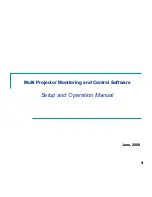
4
control the placement of the artwork by clicking a point on the Placement icon or by specify-
ing the coordinates for the origin.
Adobe Illustrator CS has added support for printing in-RIP
separations to devices (Adobe
PostScript 3™ RIPs, some Adobe PostScript Level 2 RIPs, and some LanguageLevel3 RIPs)
that support this feature. In-RIP separations print more quickly because only one PostScript
file—rather then four or more—is sent to the RIP. It also enables further in-RIP processing
such as trapping and imposition. You no longer need to load an EPSF
Rider file to the device
(as you had to in earlier versions of Illustrator). Instead, you can customize printer output
features—dot characteristics, screen angles, and screen resolutions—directly from the Print
dialog for individual inks.
Access this dialog from File > Print, Output tab. The Frequency, Angle, and
Dot Shape values can be edited directly.
When printing layers with Illustrator CS, choose to print all layers, visible layers, or all
visible, printable layers. This gives you the ability to print only selected objects as either
composite output or separations, making it easier to proof or print comps of individual parts
of complex artwork.
Enhanced PDF support
Illustrator CS introduces new support for natively creating Adobe PDF files, including com-
patibility with Acrobat 6.0 and the Adobe PDF 1.5 format. PDF file creation from Illustrator
is more closely aligned with creating PDF files using Acrobat Distiller. The same compres-
sion options are available, including the new JPEG 2000. Security options for importing and
exporting Adobe PDF files can be set, including password-protection, encryption method







































